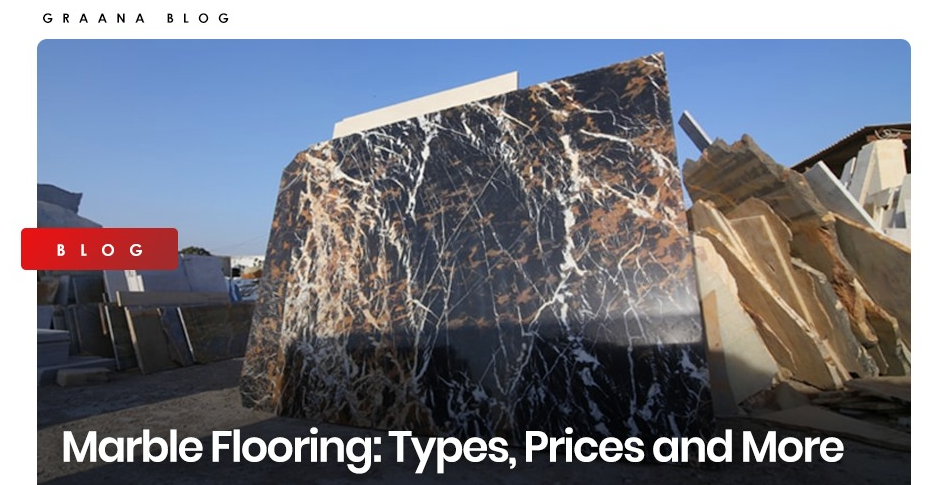Marble flooring has long been synonymous with luxury and opulence. Its timeless beauty, durability, and unique characteristics have made it a preferred choice for both residential and commercial spaces. In this article, we will delve into the world of marble flooring, exploring its history, types of marble flooring, installation, maintenance, and the myriad of benefits it offers to homeowners and designers alike.
A Glimpse into History
Marble has a rich history dating back to ancient civilizations. The Greeks and Romans used it extensively in their architecture, creating awe-inspiring structures that still stand today. Marble was not just a building material; it was a symbol of prestige and power. Even centuries later, this sentiment endures as marble continues to adorn the most luxurious homes and institutions.
Types of Marble
- Carrara Marble
- Renowned for its white or blue-grey hue.
- Popular choice for sculptures and classical buildings.
- Calacatta Marble
- Distinguished by its dramatic veining and white background.
- Often chosen for high-end kitchen countertops.
- Emperador Marble
- Brown or black in color with unique veining.
- Adds warmth and sophistication to interiors.
The Installation Process
Installing marble flooring is an art in itself, requiring precision and expertise. Here’s a glimpse of the steps involved:
- Surface Preparation
- Ensure a clean and level surface.
- Apply a suitable primer to enhance adhesion.
- Tile Layout
- Plan the layout to minimize cuts and waste.
- Dry-lay tiles to determine the best arrangement.
- Adhesive Application
- Use a high-quality adhesive.
- Apply it evenly to avoid lippage.
- Grouting
- Choose a grout color that complements the marble.
- Clean excess grout before it dries.
The Beauty of Marble Flooring
Marble flooring’s allure lies in its captivating aesthetics:
- Natural Patterns
- Each marble tile is unique.
- Natural patterns add character to any space.
- Reflective Surface
- Marble’s glossy finish enhances light and space.
- It creates an open and airy ambiance.
- Cool Underfoot
- Marble stays cool in warm weather.
- Ideal for homes in hot climates.
Maintenance Tips
Marble flooring, while stunning, requires proper care:
- Regular Cleaning
- Use a pH-neutral cleaner.
- Avoid acidic substances like vinegar.
- Sealing
- Seal marble to prevent staining.
- Reapply sealant as needed.
- Polishing
- Maintain the shine with periodic polishing.
- Hire professionals for deep restoration.
The Benefits of Choosing Marble
- Durability
- Marble can last a lifetime when properly cared for.
- It can withstand high traffic areas.
- Increased Home Value
- Marble adds significant value to your property.
- It is a desirable feature for potential buyers.
- Timeless Elegance
- Marble never goes out of style.
- It complements various design aesthetics.
Conclusion
Marble flooring is more than just a surface; it’s a statement of elegance and sophistication. Its history, variety, and enduring charm make it a top choice for those who seek timeless beauty in their living spaces.
FAQs
- Is marble suitable for all areas of the home?
- While marble is versatile, it’s best used in low-moisture areas like living rooms and bedrooms.
- Can I install marble flooring myself?
- It’s recommended to hire professionals for the installation to ensure a flawless finish.
- How often should I seal my marble floor?
- The frequency of sealing depends on usage. Generally, every 6-12 months is advisable.
- Does marble flooring require special cleaning products?
- Yes, it’s essential to use pH-neutral cleaners to avoid damaging the marble’s surface.
- Can marble flooring be used in outdoor spaces?
- While it’s possible, marble may require more maintenance in outdoor environments due to weather exposure.


